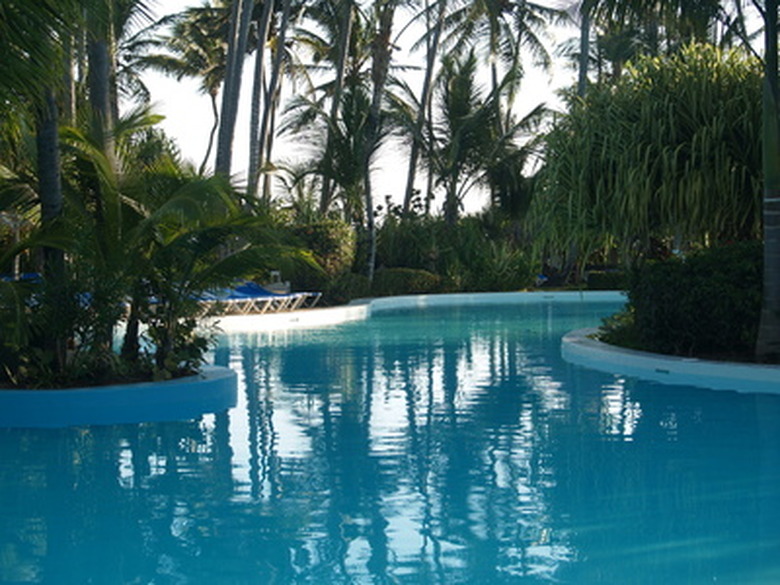Plants That Live Next To Swimming Pools
When it comes to landscaping the swimming pool area, there are different factors homeowners must take into consideration. Aside from considering the lay-out, style and planting elevations, they must also consider the types of plants to use. A swimming pool can affect the conditions of soils and atmosphere in its immediate surroundings, causing some plants to weaken and die. Fortunately, there are plants that do well near swimming pools that people can use for their landscaping needs.
Drought-Tolerant Plants
Although a pool may be full of water, it does not mean that the surrounding areas cannot experience drought. The heat coming from the sun that bounces on the hardscapes (flagstone, concrete and boulders for example) around the pool can increase the temperature near the pool. In addition, a heated pool may expel heat, causing water from surrounding soils to evaporate faster. Extreme heat and loss of water can lead to dry conditions, which can kill plants that cannot tolerate drought.
- When it comes to landscaping the swimming pool area, there are different factors homeowners must take into consideration.
- A swimming pool can affect the conditions of soils and atmosphere in its immediate surroundings, causing some plants to weaken and die.
Choosing drought-tolerant plants can help keep your pool landscape beautiful even in hot/dry conditions. Palm trees, yuccas, agaves, junipers, lantanas and marigolds are examples of plants that can tolerate drought. Using ornamental grasses and succulents that can thrive in the heat will add beauty and texture to the pool landscape. Succulents are ideal in dry conditions because they have the ability to absorb and store more than normal amounts of water in their leaves, stems or roots. Aside from not requiring a lot of water, most drought-tolerant plants are low in maintenance.
Alkaline-Tolerant Plants
Typically, pool water has a pH of 7 or higher, which makes it normal to alkaline. Chlorine, along with other cleaning agents, may cause the pool water to turn alkaline. Occasional splashing of pool water to the nearby areas is unavoidable, which can cause the soils nearby to turn alkaline as well. Plants exposed to alkaline water will eventually suffer from iron, manganese and other nutrient deficiencies.
- Choosing drought-tolerant plants can help keep your pool landscape beautiful even in hot/dry conditions.
Examples of the alkaline-tolerant plants that are ideal for pool landscaping are some species of cyclamen, salvia, juniper, hibiscus, dianthus, viburnum, hydrangea and lavender.
Salt-Tolerant Plants
Swimming pool owners who prefer to use salt water in their pools do so to avoid any chemical or allergic reactions produced by cleaning agents used in traditional sanitized pools. Splashes of salty water can cause plants nearby to weaken and deteriorate. Salt causes water to move out of the plants in a process called exosmosis. This often results in the marginal burning and loss of leaves in non-salt-tolerant plants, especially on young leaves.
Date palm, queen palm, jade plant, hibiscus, kalanchoe and star jasmine are a few examples of salt-tolerant plants that you can use near the salt-water pool.
Aquatic Plants
A natural pool is a type of swimming pool design that mimics a stream, lake or pond. The water used does not have any chemical additives. Choosing plants that can survive while submerged in water can give the pool its natural look.
- Examples of the alkaline-tolerant plants that are ideal for pool landscaping are some species of cyclamen, salvia, juniper, hibiscus, dianthus, viburnum, hydrangea and lavender.
- Choosing plants that can survive while submerged in water can give the pool its natural look.
Aquatic plants such as water lily, yellow-pond lily, Victoria water lily, lotus and floating heart will add visual interest to the natural pool while perennials such as horsetails, cat-tails and irises add height and grace. These plants can serve as food and shelter to marine life.
